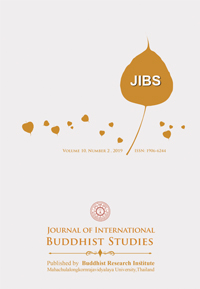Comparative Analysis of Buddhist Administration, Bureaucracy and New Public Administration
Keywords:
Buddhist Administration, Bureaucracy, New public administrationAbstract
Buddhist administration of The Great Buddha had been existed from his competency to analyze the situation profoundly, with the vision to create systematic and stable organization under the same concept and goal with every personnel’s potentiality and with respect to mutual obedience of seniority system. Bureaucracy has determined the position, structure and then selection process to fit the departments, divisions and its affiliated sub-sections respectively of which under the rules and regulations, structure and plan from the supervisors and some strict process in operations may cause delay and loss of opportunity to serve faster. For new public administration, it is a new concept of the Government for managing, which was arisen from the past decades of 1980, giving priority to restructuring of government agencies and services to the public in much modern management method. It was found that the new public administration became the main concepts that impacted to government management extensively and almost replaced the traditional government administration. New proposed concept has changed the political context and crisis facing each country. The development of information and communication technologies, including the increasing in roles of the consultancy agency, such concept brings the business sector's approach to public administration management by giving priority to creating the optimum performance, relying on the market mechanism, the open market competition, participation and decentralization to lean organization as well as viewing of citizen as customers who the State must give good services thoroughly and appropriately.
References
Borwornpattana, P. (1995). Public Administration : Theory and Study Guidelines (B.C.1887 – 1970), 4th Edition, Bangkok, Chulalongkorn University Press, 20.
Hunnak, C. (2017). “New Public Administration: The Changes for Extreme Effectiveness”. Humanity and Social Sciences, Valaialongkorn University Journal, Vol. 7 No. 3, 125. (in Thai).
Janwong, S. (2018). Public Relation Project on Reform of Bureaucracy - New Public Administration Concept. Retreived from http://www. region.prd.go.th/ewt_dl_link.php?nid=6173. (in Thai).
Karavekpun, B. (2018). New Public Administration. Retrieved from http:// www.wiki.kpi.ac.th. (in Thai).
Kedsuwan, R. (2013). New Public Administration. Bangkok, Borpit Press, 15.
Phra Brahmagunabhorn (P.A. Payutto). (2011). Dictionary of Buddhism. 20th Edition, Bangkok: Sahadhammic Press.
Sudchum, V. (2016). Public Administration and The Performance Ef ficiency of Of ficers and Staf f in Amphur Phonsai Roi Et Province, Thesis of Master of Sciences - Public Administration, Graduate School, Krirk University. (in Thai).
Thanapongsathorn, K. (1979). Comparative Public Administration. 2nd Edition. Bangkok, Thammasat University Press, 155-162.







